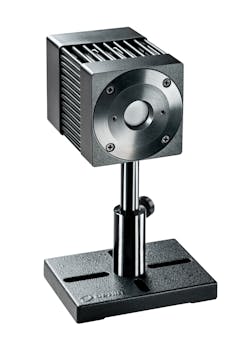Sensor measures high-power ultrashort-pulse lasers for micromachining up to 120 W

Industrial Laser Solutions readers will notice an editorial trend to higher output power ultrashort-pulse (USP) lasers for microprocessing in 2022. Reuven Silverman, General Manager at Ophir Photonics (MKS Instruments; Jerusalem, Israel) does, pointing out that “Micromachining demands precise delivery of near-perfect laser beam quality, which depends on lasers with shorter wavelengths, shorter pulses, and high repetition rates with high average power and increased pulse energy. To rapidly fabricate precisely controlled features requires 24/7 power monitoring, especially for high-repetition pulsed lasers in the nano-, pico-, and femtosecond average power up to 80 W and intermittent power up to 120 W ranges.”
The new Ophir F80(120)A-CM-17 sensor meets this challenge by providing high-accuracy measurements in such circumstances and is able to withstand higher power densities for high repetition-rate pulsed lasers than sensors with conventional coatings. This sensor is ideal for use in micromachining and material microprocessing applications in the semiconductor, display, and medical industries.
The Ophir F80(120)A-CM-17 laser power sensor works with industrial lasers at wavelengths from 248 nm to 9.4 µm. It measures laser power from 100 mW to 80 W continuous (to 120W intermittent). The sensor is fan-cooled with a 17.5 mm aperture. It features an absorber that will not suffer from the ablation usually caused by very short pulses and can withstand high power densities up to 7 kW/cm2 at 80 W.
This sensor, like all Ophir sensors, features a Smart Connector interface that operates with the company’s Centauri, StarBright, Vega, Nova II, and StarLite smart displays, Juno and Juno+ compact USB PC interface, and EA-1 Ethernet adapter. Users can choose between a variety of data display formats, including Digital with Bargraph, Line Plot, Pulse Chart, and Real Time Statistics. The displays also feature sophisticated logging of power and energy, statistics, histograms, and more, as well as advanced math functions. The display is automatically configured and calibrated when plugged into one of the company's laser measurement heads.